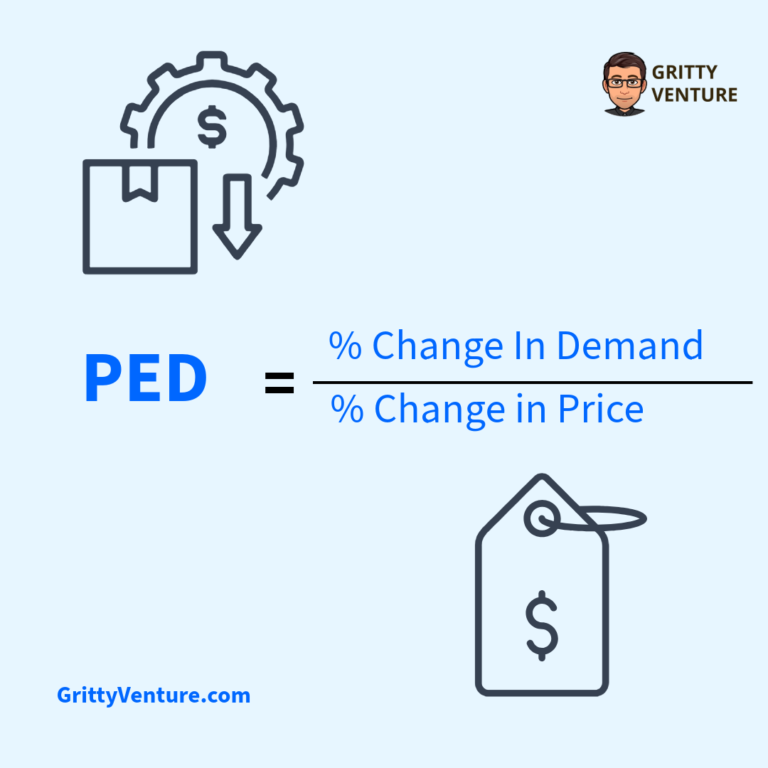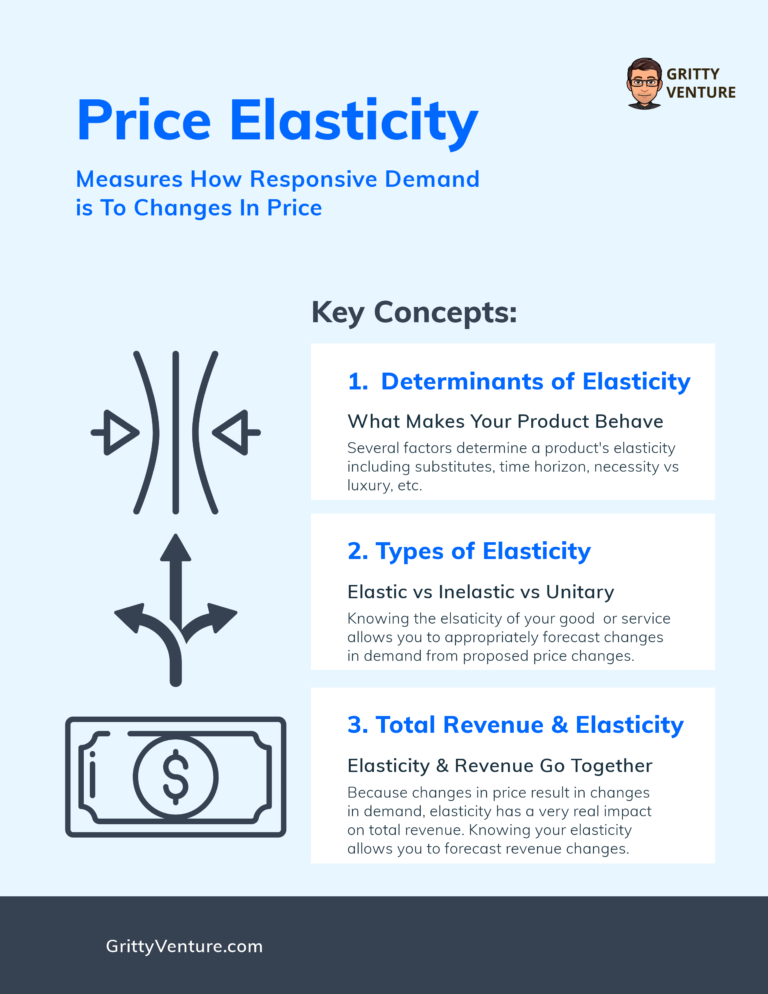Ever wondered how much a price change affects the demand for your product or service?
If you run a business I’m willing to bet you have. In economic terms, the study of these changes is called price elasticity of demand.
It’s a powerful tool that helps you predict how consumers will react to price fluctuations, allowing you to make informed decisions about pricing strategies, promotions, and inventory management.
This blog post will break down the concept of price elasticity of demand and walk you through the calculation step-by-step. I even included a calculator towards the bottom to make things easier.
What is Price Elasticity of Demand?
Price elasticity of demand (PED) measures the responsiveness of quantity demanded to a change in price.
In simpler terms, it tells you how sensitive consumers are to price changes.
A product with elastic demand means that a small price change will result in a significant change in the quantity demanded (think of luxury goods or items with readily available substitutes).
Conversely, a product with inelastic demand means that even a substantial price change will have a relatively small impact on the quantity demanded (think of necessities like gasoline or prescription medications).
Calculating Price Elasticity of Demand: A Simple Equation with Big Implications
The formula for calculating your Price Elasticity of Demand is surprisingly straightforward:

Where:
Percent Change in Quantity Demanded: This is the percentage change in the amount of your product or service that consumers are willing to buy. It’s calculated as:
((New Quantity Demanded – Original Quantity Demanded) / Original Quantity Demanded) * 100
Percent Change in Price: This is the percentage change in the price of your product or service. It’s calculated as:
((New Price – Original Price) / Original Price) * 100
Putting it into Practice: An Example
Let’s say you sell coffee. Last month, you sold 1000 cups at $5 each. This month, you lowered the price to $4, and your sales increased to 1200 cups. Let’s calculate the PED:
- % Change in Quantity Demanded: ((1200 – 1000) / 1000) * 100 = 20%
- % Change in Price: ((4 – 5) / 5) * 100 = -20%
- PED: 20% / -20% = -1
Price Elasticity of Demand Calculator
Below is a price elasticity calculator that I have put together and is free to use. Simply include your email and it will take you to the calculation page.
Once on the calculation page you can use the calculator without needing to actually submit your email (having a 2nd page helps control the spam).
If you do submit your email you will be taken to a private page on my website where you can access and download excel files of all the calculators available today and access a link to the Private Facebook Group to continue the discussion (again, without spam!).
Interpreting the Results: Elastic, Inelastic, or Unitary?
The PED value tells us the type of demand:
- |PED| > 1: Elastic Demand: The absolute value of PED is greater than 1. This means that the percentage change in quantity demanded is greater than the percentage change in price. A small price decrease will lead to a large increase in quantity demanded, and vice versa.
- |PED| < 1: Inelastic Demand: The absolute value of PED is less than 1. This means the percentage change in quantity demanded is smaller than the percentage change in price. Even a significant price change won’t drastically affect the quantity demanded.
- |PED| = 1: Unitary Elastic Demand: The absolute value of PED is equal to 1. This means the percentage change in quantity demanded is equal to the percentage change in price. Total revenue remains constant when the price changes.
Important Considerations:
- The Negative Sign: PED is usually negative because of the inverse relationship between price and quantity demanded (when price goes up, quantity demanded goes down, and vice versa). However, we often focus on the absolute value of PED when interpreting the results.
- Midpoint Method: For more accurate calculations, especially when dealing with larger price changes, consider using the midpoint method for calculating percentage changes. This involves using the average of the original and new values as the denominator in the percentage change formula.
- External Factors: PED can be influenced by various factors, such as the availability of substitutes, the time horizon, and the necessity of the product.
Why is Price Elasticity of Demand Important?
Understanding PED is crucial for:
- Pricing Decisions: Knowing the elasticity of demand helps businesses determine the optimal price point to maximize revenue.
- Forecasting Sales: PED can help predict how changes in price will affect sales volume.
- Marketing Strategies: Understanding consumer sensitivity to price can inform marketing campaigns and promotional offers.
By mastering the calculation and interpretation of price elasticity of demand, you’ll gain valuable insights into consumer behavior and be better equipped to make strategic business decisions. So, start crunching those numbers and unlock the power of PED!




